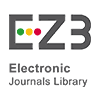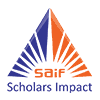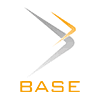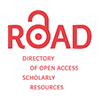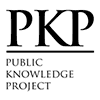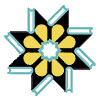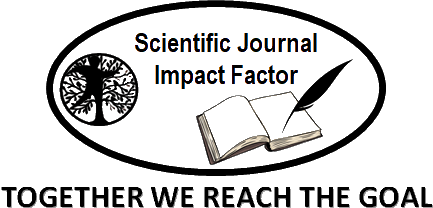Exploring Gender Dynamics: A Linguistic Analysis of Gender Representation in Najib Mahfudz's Novel Bidayah wa Nihayah
Abstract
The researcher's findings from the Novel Bidayah Wa Nihayah are very interesting to study in more depth regarding the analysis of gender representation (language describes characters based on gender). This research analyses the language used to portray characters based on gender and gender stereotypes in "Bidayah Wa Nihayah." This study contributes to understanding the language differences men and women use in "Bidayah wa Nihayah," providing insight into linguistic features employed by each gender. The findings from my research are quite intriguing, particularly regarding the representation of gender language in the novel "Bidayah wa Nihayah" by Najib Mahfudz. The study reveals the use of filler words, mitigators, and address terms. Filler words and mitigators indicate a representation of gender language that reflects male dominance and the oppression of individuals. This representation is also evident in the dominance of male characters in conversations. Female characters use language to establish, maintain, and develop personal relationships, while males view language as a tool for conveying information. Dominant gender language representation is found in the use of fillers and hedges in the conversations within Najib Mahfouz's novel "Bidayah wa Nihayah."
Keywords
Full Text:
PDFReferences
Abu Bakar, A. S., & Muhammad Rusydi. (2022). Relasi Gender Dalam Semiotika Sastra Arab: Perspektif Semiotika Roland Barthes. Rausyan Fikr: Jurnal Ilmu Studi Ushuluddin Dan Filsafat. https://doi.org/10.24239/rsy.v18i1.905
Agata, A. O., & Saifullah, A. R. (2022). Ragam Bahasa Pada Caption Instagram: Analisis Gender (Variety of Languages on Instagram Captions: Gender Analysis). Indonesian Language Education and Literature, 7(2), 388. https://doi.org/10.24235/ileal.v7i2.9592
Alhammadi, W., Rabab’Ah, G., & Alghazo, S. (2024). Gender Differences in Language Use in Talks at Google. Kemanusiaan, 31(1), 149–176. https://doi.org/10.21315/kajh2024.31.1.8
Aulia, S. A., Yunita Suryani, & Salimulloh Tegar Sanubarianto. (2024). Bahasa Gender dalam Novel Perempuan di Titik Nol Karya Nawal El-Saadawi. Ghancaran: Jurnal Pendidikan Bahasa Dan Sastra Indonesia, 6(1), 71–80. https://doi.org/10.19105/ghancaran.v6i1.12274
Azizah, D. N. (2021). Hedges Function in Masculine and Feminine Feature’s Language: A Pragmatics Analysis. Journal of Pragmatics Research. https://doi.org/10.18326/jopr.v3i1.59-69
Clark, H. H., & Fox Tree, J. E. (2002). Using uh and um in spontaneous speaking. Cognition, 84(1), 73–111. https://doi.org/10.1016/S0010-0277(02)00017-3
Diahsafitri Tiyas. (2022). Representasi Ideologi Gender Dalam Novel Raden Dewi Sartika Karya E. Rokajat Asura. Jurnal Ilmiah Nosi.
Dinkar, T., Clavel, C., & Vasilescu, I. (2022). Fillers in Spoken Language Understanding: Computational and Psycholinguistic Perspectives. Revue Traitement Automatique Des Langues.
Gandeza, C. C. (2023). Language Fillers Used by Students in Conversation. Journal of Social Work and Science Education. https://doi.org/10.52690/jswse.v4i2.394
Ghazali, A. R., Ismail, M. R., Akmar, K., & Latif, A. (2023). Poverty Issues in the Novels Bidayah Wa Nihayah and Ranjau Sepanjang Jalan : A Comparative Study. 5(2), 56–67.
Ghozali, D. D., & Arden, A. (2022). Tipe-tipe filler pada mahasiswa bahasa dan kebudayaan Arab universitas Al Azhar Indonesia. Konferensi Nasional Pascasarjana Program Studi Linguistik, 5(2), 48–49. https://doi.org/10.32734/lwsa.v5i1.1321
Gooch, J. (1973). Sir George Clarke’S career at the committee of imperial defence, 1904-1907. Language in Society, 2(1), 45–79. https://doi.org/10.1017/S0047404500000051
Indriyana, B. S., Sina, M. W., & Bram, B. (2021). Fillers and Their Functions in Emma Watson’s Speech. Ranah: Jurnal Kajian Bahasa, 10(1), 13. https://doi.org/10.26499/rnh.v10i1.1350
Indriyani, V., Rachman, A., & Fathia, W. (2024). Representasi Gender dalam Buku Teks Tematik Terpadu Siswa Sekolah Dasar. Jurnal Onoma: Pendidikan, Bahasa, Dan Sastra, 10(1), 722–733. https://doi.org/10.30605/onoma.v10i1.3312
Jing, Y. (2023). Studi bahasa gender dalam film Kartini: Princess of Java dari perspektif sosiolinguistik. Sintesis, 17(2), 171–180. https://doi.org/10.24071/sin.v17i2.7450
Kasmiran, M. S., & Ena, O. T. (2019). Gender Representation in Men’s and Women’s Fashion Magazine. Journal of English Language Teaching and Linguistics. https://doi.org/10.21462/jeltl.v4i1.179
Mahfudz, N. (2013). Bidayah Wa Nihayah. In Mesir.
Masran, S. (2022). Penggunaan bahasa dan gender pada bahasa indonesia (kajian linguistik kebudayaan). Ensiklopedia Education Review, 4(2), 44–46. https://doi.org/10.33559/eer.v4i2.272
Nisya, R. K., Rahmawati, I. S., & Asteka, P. (2024). Representasi Gender Dalam Cerita Anak: Kajian Sastra Feminis. Journal of Multidisciplinary Research and Development. https://doi.org/10.56916/jmrd.v1i1.621
Nugraha, E., & Tarmini, W. (2023). Produksi Fillers dalam Ujian Berbicara Bahasa Indonesia Kelas 10 Kurikulum IGCSE: Tinjauan Psikolinguistik. Deskripsi Bahasa, 6(2), 60–74. https://doi.org/10.22146/db.v6i2.9760
Rahma Salbiah, & Sumardi. (2021). Bahasa Dan Gender Dalam Film: Athirah (Sebuah Kajian Sosiolinguistik). An-Nahdah Al-’Arabiyah, 1(2), 56–69. https://doi.org/10.22373/nahdah.v1i2.1231
Rokhim, I. M., & Noorrizki, R. D. (2023). Stereotip Gender pada Wanita Karir di Tempat Kerja. Flourishing Journal. https://doi.org/10.17977/um070v2i62022p415-421
Setyawan, M. Y. (2021). Perbedaan Pola Bahasa Pria dan Wanita dalam Film Wadjda: Analisis Teori Perbedaan. Nady Al-Adab : Jurnal Bahasa Arab.
Sihombing, E. A. R. O. (2023). Stereotip-Stereotip terhadap Perempuan Pengemudi Ojek Online di Kota Balikpapan. EJournal Pembangunan Sosial.
Sukmawati, W. M. I. (2019). Representasi gender dalam novel “catatan hati seorang istri” karya asma nadia (kajian feminisme). Edu-kata, 5(2), 187–194. https://doi.org/10.52166/kata.v4i2.1021
Suwastini, N. K. A., Wiraningsih, P., & Adnyani, K. E. K. (2023). Representation of Gendered Language in English Textbook for Indonesian Junior High School. International Journal of Language Education, 7(1), 94–119. https://doi.org/10.26858/ijole.v1i1.37632
Svendsen, A. D. (2019). Lakoff and Women’s Language. Leviathan: Interdisciplinary Journal in English. https://doi.org/10.7146/lev.v0i4.112651
Taufik, Maltuful Anam, & Gufron Zainal Abidin Sdawi Manasiq. (2023). Bahasa dan gender (kajian sosial-edukatif dalam pembelajaran bahasa arab). Tanfidziya: Journal of Arabic Education, 2(03), 182–196. https://doi.org/10.36420/tanfidziya.v2i03.322
Utami, N. N. A. (2022). Penggunaan Fitur Bahasa Perempuan pada Novel Tempurung Karya Oka Rusmini. Diglosia: Jurnal Kajian Bahasa, Sastra, Dan Pengajarannya, 5(2), 327–340. https://doi.org/10.30872/diglosia.v5i2.282
DOI: http://dx.doi.org/10.18415/ijmmu.v12i4.6617
Refbacks
Copyright (c) 2025 International Journal of Multicultural and Multireligious Understanding

This work is licensed under a Creative Commons Attribution-NonCommercial-NoDerivatives 4.0 International License.
https://ijmmu.com
editor@ijmmu.com
facebook.com/ijmmu
Copyright © 2014-2018 IJMMU. All rights reserved.
















